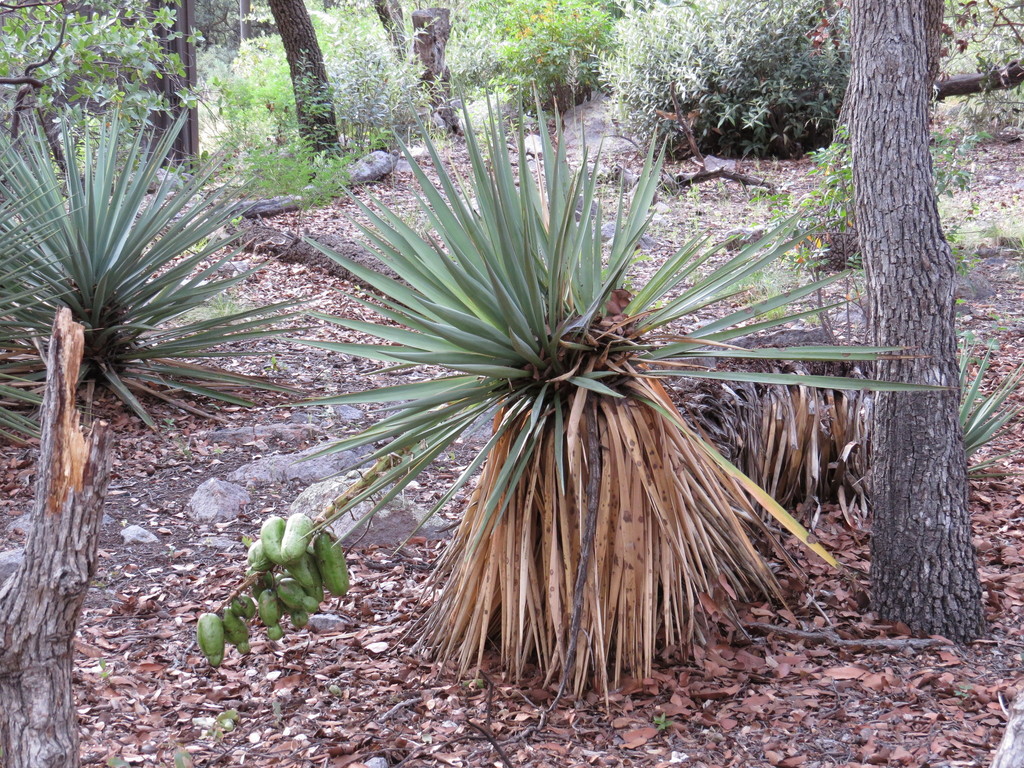Mountain yucca
(Yucca madrensis)

Description
Yucca madrensis is a stunning desert plant known for its tall, strikingly beautiful appearance and resilience in harsh climates. It is a member of the Agavaceae family and is commonly referred to as the Big Bend yucca, Spanish dagger, or Don Quixote's lance. This plant is native to the Chihuahuan Desert of Mexico and the southwestern United States. In this article, we will explore the various aspects of Yucca madrensis, including its physical characteristics, habitat, cultivation, and medicinal properties. Physical Characteristics Yucca madrensis is a tall, evergreen succulent that can grow up to 25 feet (7.6 meters) in height. Its trunk is generally single, but it may occasionally branch, and it can reach a diameter of 18 inches (45.7 cm). The plant's leaves are narrow, sharp-tipped, and have a bluish-green hue. They can grow up to 2 feet (60 cm) long and 1.5 inches (4 cm) wide, and they are arranged in a rosette pattern at the top of the trunk. The leaves are rigid, fibrous, and have sharp margins, which can cause injury if handled carelessly. The plant produces a tall flowering stalk that emerges from the center of the rosette, and it can reach up to 15 feet (4.6 meters) in height. The stalk is covered with small, white, bell-shaped flowers that bloom in the summer months. The flowers are followed by green to brownish-black, oblong fruits that are about 2 inches (5 cm) long and contain numerous small, black seeds. Habitat Yucca madrensis is native to the Chihuahuan Desert of Mexico and the southwestern United States. It is commonly found in arid, rocky canyons and desert slopes, often at high elevations of up to 6,500 feet (1,980 meters) above sea level. The plant is well adapted to its harsh environment, with its deep roots allowing it to survive extended periods of drought and its thick, fibrous leaves protecting it from intense sunlight and temperature fluctuations. Cultivation Yucca madrensis is a popular ornamental plant due to its stunning appearance and hardiness. It is relatively easy to grow and requires little maintenance once established. The plant prefers full sun and well-drained soil, and it can tolerate a wide range of temperatures, from below freezing to over 100°F (37.7°C). Propagation of Yucca madrensis can be achieved through seed or vegetative propagation. To propagate through seeds, collect the mature fruit in the fall, remove the pulp, and plant the seeds in well-draining soil. Germination usually occurs within 2-4 weeks. For vegetative propagation, remove the offsets or suckers that grow from the base of the plant and replant them in a separate container or location. Medicinal Properties Yucca madrensis has been used for centuries by indigenous communities for its medicinal properties. The plant's roots, leaves, and flowers contain saponins, which are natural compounds that have anti-inflammatory, antifungal, and antibacterial properties. The saponins also have a diuretic effect, which can help in the treatment of conditions such as hypertension and edema. Yucca madrensis has been traditionally used to treat arthritis, joint pain, and other inflammatory conditions. It is believed that the saponins present in the plant can reduce inflammation by inhibiting the release of inflammatory cytokines. The plant is also used in the treatment of skin conditions such as eczema and psoriasis, as well as in the management of diabetes.
Taxonomic tree:







